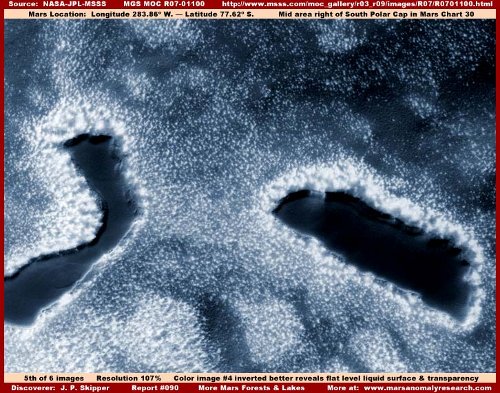It looks like you're using an Ad Blocker.
Please white-list or disable AboveTopSecret.com in your ad-blocking tool.
Thank you.
Some features of ATS will be disabled while you continue to use an ad-blocker.
share:
originally posted by: Ophiuchus 13
a reply to: LuckyYurg
Exactly, there are so many pics like this, I love them. But I have been waiting to find something that was close up, and hopefully more obvious
originally posted by: tigertatzen
a reply to: Mianeye
Seen something similar when walking the beaches, water leaves a clear depression with heightened edges, sand of different color slides on top.
I grew up in the Middle East, in the desert. The very same thing was evident around water wells, from seepage. It's something thin and is mixing with the sand, making a soupy sludge. Beaches came immediately to mind also, as soon as I saw it.
Gotta love real-world comparisons. It's so hard when we're looking at a completely different environment. But there should be some elemental properties that remain the same between the two worlds
a reply to: LuckyYurg
I think that is what part of the problem is with believing things to be real or not. We try to equate other planets' surfaces with our own, and when we can't, we start questioning the validity of what we're seeing. It's comforting to be able to identify similarities in an alien landscape. Too bad we can't just go there and see it for ourselves...but of course part of the excitement is that little slice of the unknown, and all the possibilities that go along with it.
Gotta love real-world comparisons. It's so hard when we're looking at a completely different environment. But there should be some elemental properties that remain the same between the two worlds
I think that is what part of the problem is with believing things to be real or not. We try to equate other planets' surfaces with our own, and when we can't, we start questioning the validity of what we're seeing. It's comforting to be able to identify similarities in an alien landscape. Too bad we can't just go there and see it for ourselves...but of course part of the excitement is that little slice of the unknown, and all the possibilities that go along with it.
originally posted by: tigertatzen
a reply to: LuckyYurg
Gotta love real-world comparisons. It's so hard when we're looking at a completely different environment. But there should be some elemental properties that remain the same between the two worlds
I think that is what part of the problem is with believing things to be real or not. We try to equate other planets' surfaces with our own, and when we can't, we start questioning the validity of what we're seeing. It's comforting to be able to identify similarities in an alien landscape. Too bad we can't just go there and see it for ourselves...but of course part of the excitement is that little slice of the unknown, and all the possibilities that go along with it.
Indeed, saying we know anything about space, other planets, stars, etc, is like somebody studying a grain of sand and determining they know everything about earth
a reply to: LuckyYurg
It's almost an insult to the complexity of the Universe itself. Not to mention pompous, that anyone could think they know everything there is to know about something that by its very existence is the embodiment of wonderment. Our distance from other worlds gives us a sense of entitlement that we do not deserve...I wonder if other races of beings out there have the same tendencies of believing that they are the experts too. I think probably yes.
Indeed, saying we know anything about space, other planets, stars, etc, is like somebody studying a grain of sand and determining they know everything about earth
It's almost an insult to the complexity of the Universe itself. Not to mention pompous, that anyone could think they know everything there is to know about something that by its very existence is the embodiment of wonderment. Our distance from other worlds gives us a sense of entitlement that we do not deserve...I wonder if other races of beings out there have the same tendencies of believing that they are the experts too. I think probably yes.
edit on 30343America/ChicagoFri, 05 Jun 2015 15:34:44 -050030pm30155America/Chicago by tigertatzen because: fat fingas
originally posted by: Aleister
Those are dust trickles, the reason they look darker is that there is darker dust just under the surface. This was extensively discussed somewhere in the Mars anomalies thread.
No problem with that explanation except for two small details. First it is an assumption that there is darker dust below the surface. In fact there is a 50:50 chance it's lighter ! but they are all dark (where is the bookie). Secondly dust trickles can occur anywhere but these are occurring below a crevice. I call that a hellish coincidence or denial about what is coming out of the crevice.
Now there is absolutely no problem with liquid on Mars (it does not lead to alien cities !!!! calm down) it's the conditions we need to consider. The martian atmosphere is too thin and the pressure would cause instant evaporation but a short burst of liquid from an underground source (ie a crevice) is surely plausible. Oh and I am fully aware that liquid does not mean water.
a reply to: LuckyYurg
Char-Lee reminded us that I actually did a thread on this when I got caught up in the 'Water on Mars!' mistake.
Here is my thread, in which I was educated fairly quickly:
www.abovetopsecret.com...
Char-Lee reminded us that I actually did a thread on this when I got caught up in the 'Water on Mars!' mistake.
Here is my thread, in which I was educated fairly quickly:
www.abovetopsecret.com...
originally posted by: Aleister
a reply to: LuckyYurg
Char-Lee reminded us that I actually did a thread on this when I got caught up in the 'Water on Mars!' mistake.
Here is my thread, in which I was educated fairly quickly:
www.abovetopsecret.com...
I do remember a better possible area that could have been water, a rivlet that was discussed? Do you recall that one? I think maybe it was found by Funbox. If I get a chance i will search.
a reply to: Aleister
ahh the famous martian waterslides , adrift with blue -it's on dewberry's , quite a theme park ,
but seriously if its 'dark sand', what is causing it to shift ? the ineffectual Martian wind ? lifting them huge particles on the floor.. surely not
passing dustdevil?
maybe temperature inversion
maybe when the sun comes up, the 2 % water content shifts..
maybe
maybe the atmospheres thicker than being said ..
so wheres the action from?
funbox
ahh the famous martian waterslides , adrift with blue -it's on dewberry's , quite a theme park ,
but seriously if its 'dark sand', what is causing it to shift ? the ineffectual Martian wind ? lifting them huge particles on the floor.. surely not
passing dustdevil?
maybe temperature inversion
maybe when the sun comes up, the 2 % water content shifts..
maybe
maybe the atmospheres thicker than being said ..
so wheres the action from?
funbox
I was 100% convinced for several minutes of it being liquid. I then zoomed fully into the pic and poked around for a bit and am now convinced it is
sand.
There is not one reflection to be found anywhere. Not one.
Additionally, there are a pockets where sand has trickled down and left a small void that liquid can only leave if it is draining very quickly. See pic for example.
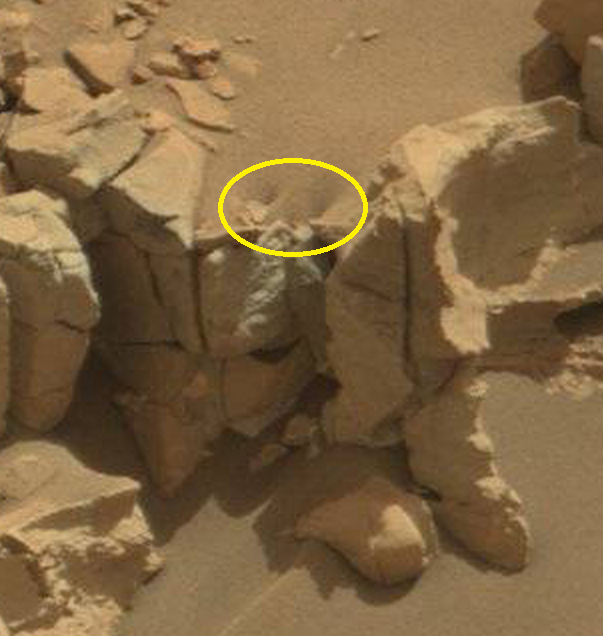
I do believe though that it may very well be from an old liquid seepage.
There is not one reflection to be found anywhere. Not one.
Additionally, there are a pockets where sand has trickled down and left a small void that liquid can only leave if it is draining very quickly. See pic for example.

I do believe though that it may very well be from an old liquid seepage.
edit on 5-6-2015 by Halfswede because: (no reason given)
This is just darker dust/sand underneath the lighter iron oxide coating that gives Mars its familiar red colour.
This material has been exposed when the rover took scooped samples for chemical analysis:
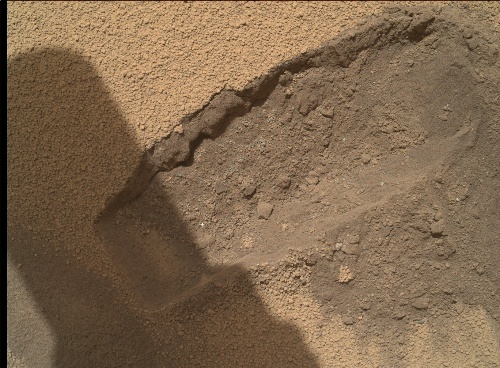
or even exposed by the rover's wheels:
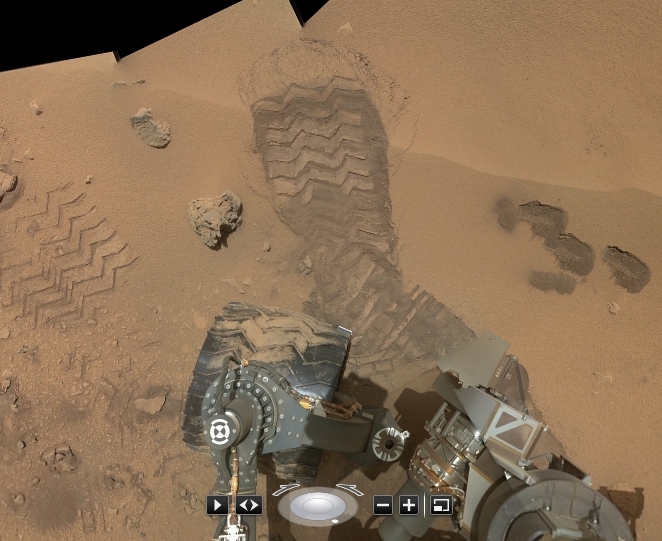
This material has been exposed when the rover took scooped samples for chemical analysis:

or even exposed by the rover's wheels:

a reply to: wildespace
strange to note that the tracks on the left hand side of the picture look a little more dried
so what do you think causes the slippages, in the the pictures presented in the op Wildespace?
funbox
strange to note that the tracks on the left hand side of the picture look a little more dried
so what do you think causes the slippages, in the the pictures presented in the op Wildespace?
funbox
originally posted by: funbox
a reply to: Aleister
ahh the famous martian waterslides , adrift with blue -it's on dewberry's , quite a theme park ,
but seriously if its 'dark sand', what is causing it to shift ? the ineffectual Martian wind ?
Wind on Mars is effectual enough to create dust devils, erode rocks (albeit over millions of years), and even transport sand up the dune slope during strong seasonal winds near the polar region.
Landscape on Mars does change, due to wind and other factors, such as temperature changes, seasonal freezing and thawing, and meteoroid impacts.
The HiRISE website, which features thousands of recent high-rez photos from the Mars Reconnaissance Orbiter, show quite a dynamic planet.
a reply to: wildespace
it makes no sense , the pictures you present , and specifically where the scoop has gone in , you can see a crust ,, do you think that the wind can break this crust to reveal the darker sand underneath , im finding it difficult to see the wind blowing surface sand , which would be of the iron oxide color , to cause this , in say, an accumulative , then gravity overspills .. but then the color would be, as the surface color is ..
maybe im misunderstanding you
funbox
it makes no sense , the pictures you present , and specifically where the scoop has gone in , you can see a crust ,, do you think that the wind can break this crust to reveal the darker sand underneath , im finding it difficult to see the wind blowing surface sand , which would be of the iron oxide color , to cause this , in say, an accumulative , then gravity overspills .. but then the color would be, as the surface color is ..
maybe im misunderstanding you
funbox
The last picture has other interesting objects in it too.
Did anyone else notice the carved stone?
Did anyone else notice the carved stone?
originally posted by: funbox
a reply to: wildespace
it makes no sense , the pictures you present , and specifically where the scoop has gone in , you can see a crust ,, do you think that the wind can break this crust to reveal the darker sand underneath , im finding it difficult to see the wind blowing surface sand , which would be of the iron oxide color , to cause this , in say, an accumulative , then gravity overspills .. but then the color would be, as the surface color is ..
maybe im misunderstanding you
funbox
Mars is a complex planet; perhaps limiting your expectations to what should and shouldn't happen there to a simple model is not wise. Some areas could be very static, with the thin coating or "crust" of iron oxide covering whatever is beneath, while other areas would have exposed grey or white rocks, dark sand dunes piling up in certain places, sand-slides breaking out from beneath the surface, etc. The HiRISE camera has spotted several slides and avalaunches, some of which were quite big.
Aeolian (caused by wind) processes play a large role in what happens on the surface of Mars: www.uahirise.org...
Aeolian geology is the study of landforms formed by wind (Aeolus is the wind god in Greek mythology). On Mars, where other processes such as fluvial erosion, volcanism, and tectonism are slow, intermittent, or do not occur in the present era, aeolian activity is the most dynamic geologic process in non-polar areas. Numerous depositional and erosional landforms attributable to wind activity are present. On a large scale seen from previous orbiters these include dunes, ripples, yardangs, wind tails, and dust devil tracks. At the small scale seen from landers and rovers, drifts, erosional moats, wind tails, ripples, and ventifacts are found.
More info: www.planetary.org...
edit on 6-6-2015 by wildespace
because: (no reason given)
a reply to: wildespace
you think ive been limiting my expectations to what happens on mars im not the one saying theres a thin atmosphere up there that has a lifting power of 2 microns
so there's more atmosphere now ?
funbox
you think ive been limiting my expectations to what happens on mars im not the one saying theres a thin atmosphere up there that has a lifting power of 2 microns
so there's more atmosphere now ?
funbox
edit on 6-6-2015 by funbox because: www
a reply to: wildespace
Wind doesn't carve 90 degree angles nor does it carve cubes.
It can't carve glyphs or writing and to be fair, you making out it does is quite sad.
NASA you need help editing these pictures, you've missed a few crackers in the ops last PIC.
Wind doesn't carve 90 degree angles nor does it carve cubes.
It can't carve glyphs or writing and to be fair, you making out it does is quite sad.
NASA you need help editing these pictures, you've missed a few crackers in the ops last PIC.
originally posted by: EA006
a reply to: wildespace
Wind doesn't carve 90 degree angles nor does it carve cubes.
It can't carve glyphs or writing and to be fair, you making out it does is quite sad.
NASA you need help editing these pictures, you've missed a few crackers in the ops last PIC.
But nature can form or carve those things in other ways.
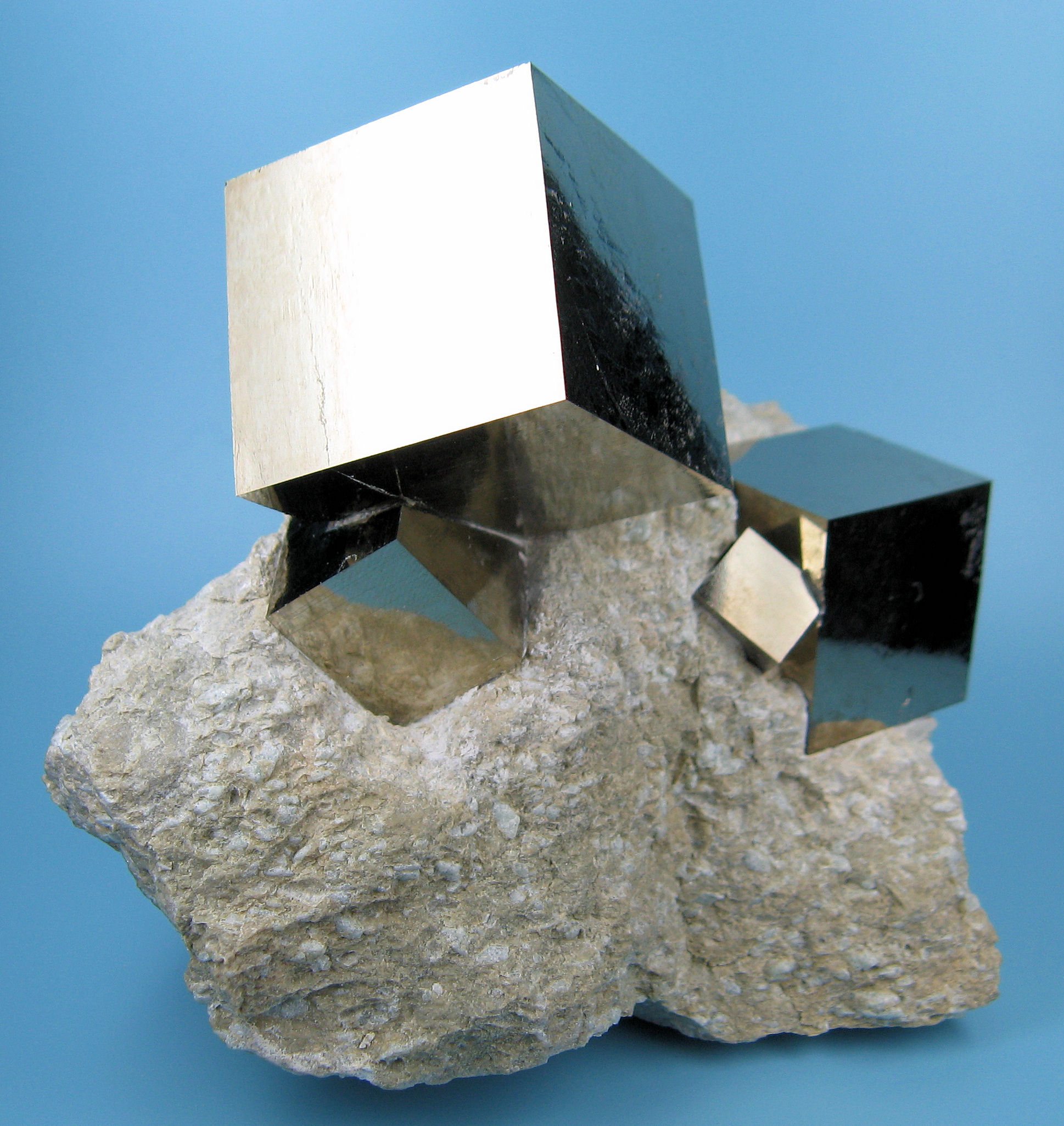
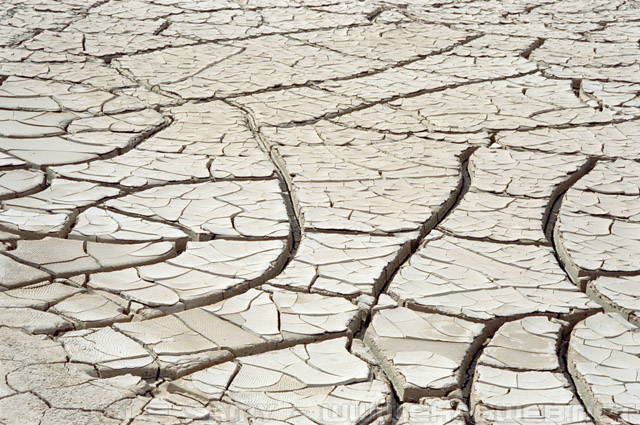
Don't forget that Mars had flowing liquid water in the past. One again, you place the whole judgement on your idea of what wind could or couldn't do on Mars, forgetting that it's a whole planet with lots of different natural processes going on or that have happened in the past, including wind. And martian wind is strong enough to blow the rover's discarded parachute around: www.uahirise.org...
@funbox - if the observed wind-reated processes were incompatible with what we know about martian atmosphere, I'm sure many researchers would have picked up on that and posted their findings that could be peer-reviewed and confirmed. Since that isn't happening, I'm sure it's safe to say that the preceived inconsistencies are due to your lack of knowledge, or wrong expectations.
edit on 6-6-2015 by wildespace because: (no reason
given)
new topics
-
Ed Dowd some good news
Medical Issues & Conspiracies: 4 hours ago -
Anyone like the Scorpions?
Music: 5 hours ago -
What if this is true?
2024 Elections: 6 hours ago -
Merry-Go-Round Ride
Short Stories: 7 hours ago -
It's toast
General Chit Chat: 11 hours ago
top topics
-
A fix for the Trans players in sports
Social Issues and Civil Unrest: 15 hours ago, 16 flags -
What if this is true?
2024 Elections: 6 hours ago, 12 flags -
Man Stabbed or Cardiac arrest on Westminster Bridge, London, UK
Mainstream News: 13 hours ago, 7 flags -
It's toast
General Chit Chat: 11 hours ago, 7 flags -
Ed Dowd some good news
Medical Issues & Conspiracies: 4 hours ago, 6 flags -
Merry-Go-Round Ride
Short Stories: 7 hours ago, 5 flags -
Anyone like the Scorpions?
Music: 5 hours ago, 3 flags
active topics
-
Post A Funny (T&C Friendly) Pic Part IV: The LOL awakens!
General Chit Chat • 7821 • : KrustyKrab -
Anyone like the Scorpions?
Music • 4 • : KrustyKrab -
-@TH3WH17ERABB17- -Q- ---TIME TO SHOW THE WORLD--- -Part- --44--
Dissecting Disinformation • 3372 • : WeMustCare -
International Criminal Court Issues Arrest Warrant For Netanyahu
Mainstream News • 49 • : Degradation33 -
Ed Dowd some good news
Medical Issues & Conspiracies • 3 • : chr0naut -
France gives Ukraine license to fire long-range missiles at Russia
World War Three • 41 • : Connector -
What if this is true?
2024 Elections • 25 • : BernnieJGato -
Russia Ukraine Update Thread - part 3
World War Three • 6877 • : worldstarcountry -
Ok this is some BS now WTH
Rant • 17 • : tamusan -
A fix for the Trans players in sports
Social Issues and Civil Unrest • 19 • : Macenroe1982

